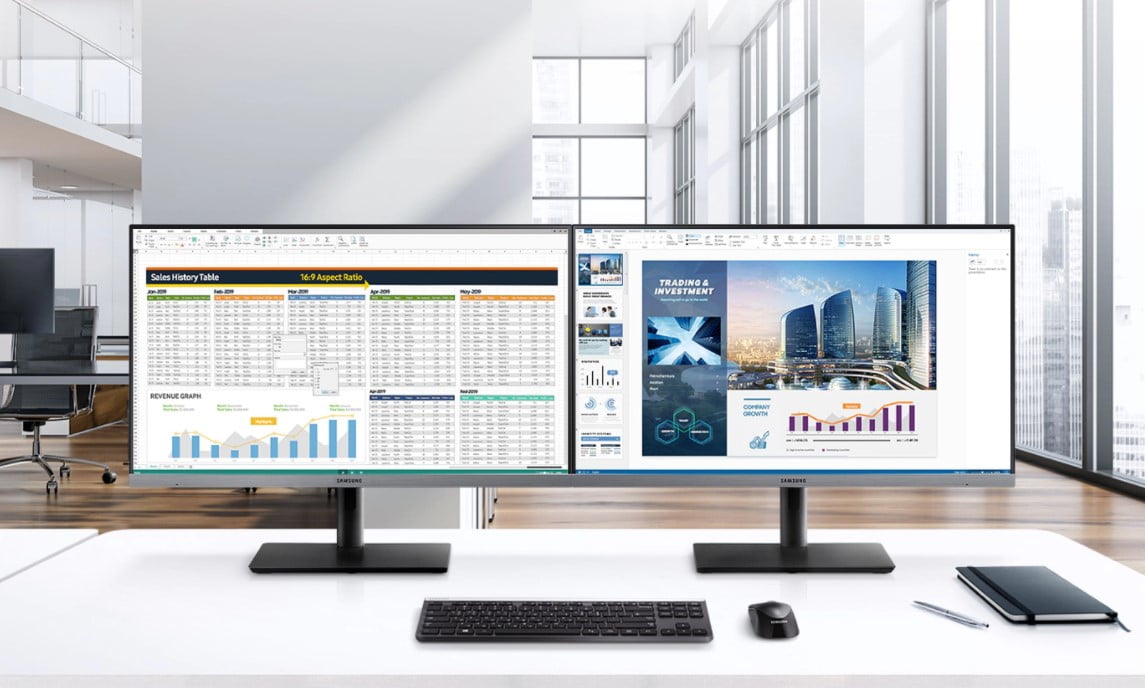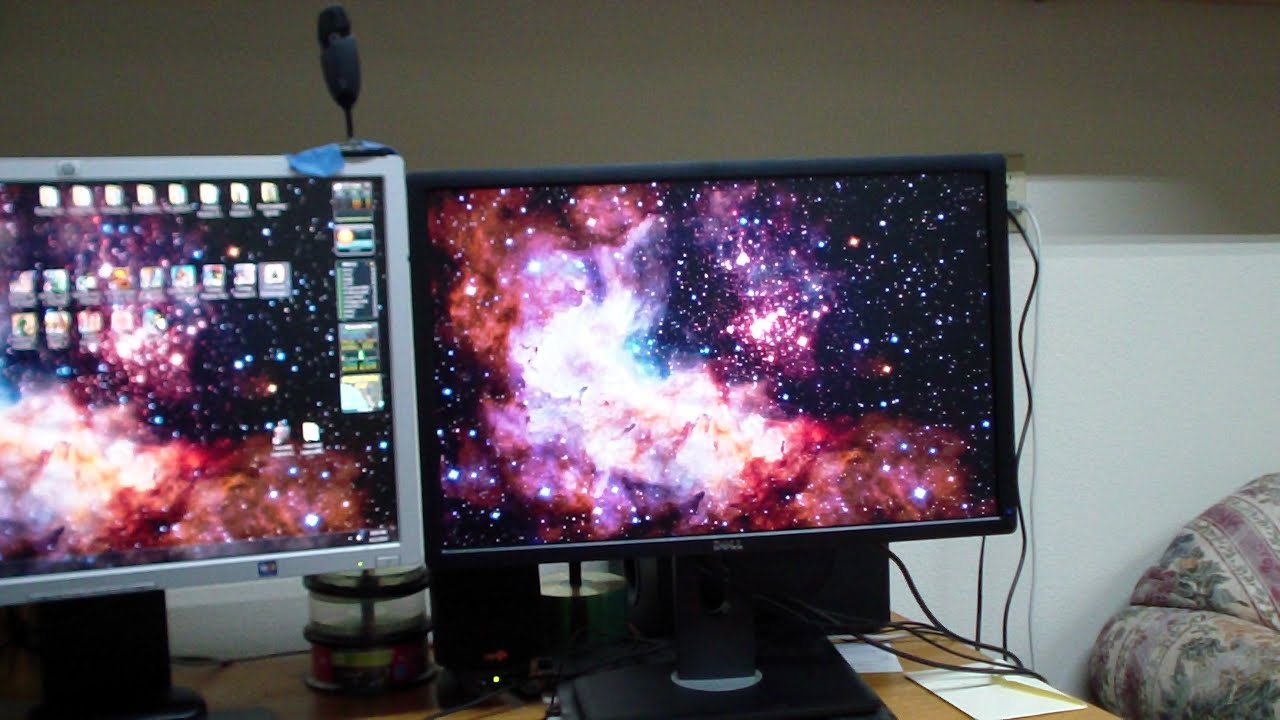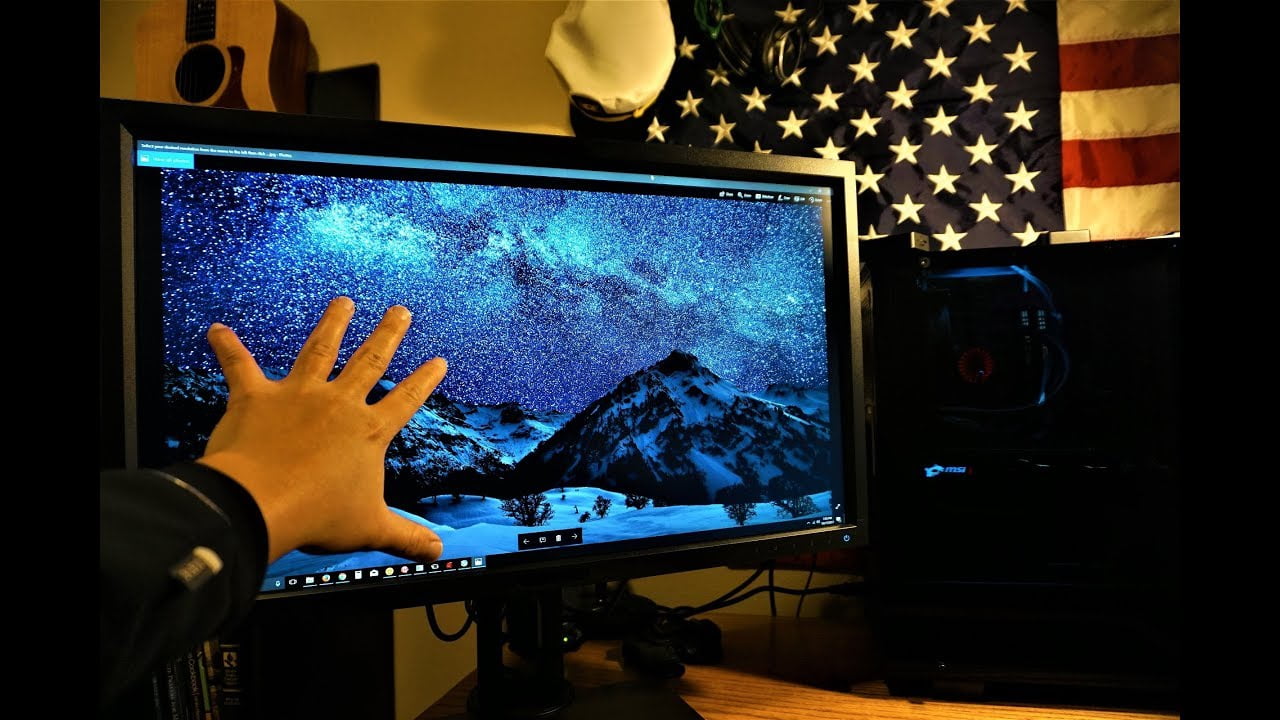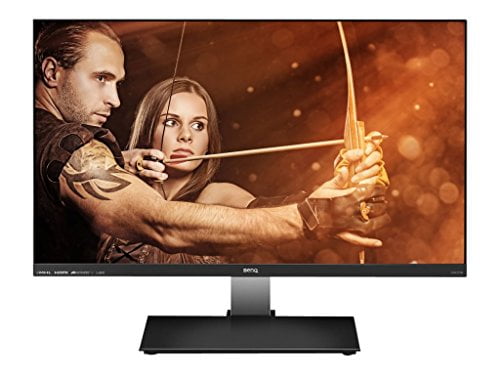Learning how to set up a modern gaming monitor will help you get the most out of your gaming experience. Today, gaming setups mainly constitute two monitors. The reason for shifting from one to two monitors is that dual monitors increase your productivity and gaming skills. coupled with FreeSync technology, it could enhance your overall gaming performance. Although, if your monitor keeps going to sleep while you game, that can pose a major problem. Another issue is if your monitor bottlenecks your PC while gaming, which means it slows down your gaming abilities. But what we are going to focus on is how to set up a single monitor for your gaming needs.
KEY TAKEAWAYS:
- Take time to learn the impact of the settings on your monitor to know how they affect your gaming experience.
- Some of the more powerful monitor settings are usually not enabled by default.
- One gaming monitor is ideal for gaming, but a more rich experience involves using two or three monitors.
Although two or three screens provide you with larger real estate, it is essential to know how to set up a single monitor for a start. You see, although your monitor is on and ready for a game, some of the critical features in a monitor are usually “OFF” by default; you have to configure the settings by yourself. So, to help you set the correct configurations, we will guide you through the process. But if dual monitor gaming is your thing, then learn about how to set a primary monitor for gaming.
The Process of Setting up your Gaming Monitor
STEP 1 CHOOSE YOUR REFRESH RATE AND RESOLUTION
NVIDIA Users
Ensure that you have the latest driver running on your PC.
Process of adjusting the native Resolution
- Right-click the desktop.
- Select Nvidia Control Panel. Under “Display,” click the “+” and choose “Change Resolution.”
- Choose the maximum resolution.
Process of Adjusting Refresh Rate Settings
On the panel’s right side, pick the highest refresh rates you see for your selected resolution.
Note: The refresh rate will change when adjusting the color settings for HDR.
AMD Users
Process of Adjusting Resolution.
- Right-click desktop and choose “Display Settings.”
- Scroll and select the highest resolution settings from the drop-down menu.
Process of Adjusting Refresh Rate Settings
- Choose “Advanced Display Settings” located at the bottom of the page.
- Select Display adapter properties for Display 1 – if you have multiple screens, the number will change.
- Pick the highest refresh rate.
STEP 2 CONFIGURE THE COLOR DEPTH
For you to display HDR content, you have to configure the color depth of your monitor. Find the process below.
NVIDIA Users
- Head to the screen where you configured the refresh rate and resolution.
- At the bottom of the page, under “Apply the following settings,” select “Use NVIDIA Color settings.”
- Adjust the settings on the drop-downs in that section to the highest value. For example, choose “RGB” for Output Color Format and “Full” for Output Dynamic Range.
- Apply and save.
If you have a 4K monitor with 144Hz, the Output Color Depth may reduce. Set it back to the highest value and then use the YCbCr444 as the new Output Color Format. This way, your Output Dynamic Range will be set to “Limited.” In case the color depth changes again, use the lower Output Color Format of YCbCr422.
When you get to this point, your images or texts may have that ugly off-color around them. So, only use these settings for video and gaming. As a last resort, if all fails, drop to an 8-bit Output Color Depth, or lower the refresh rate. This procedure also applies when setting up dual monitors for gaming.
AMD Users
- Right-click on desktop
- Choose AMD Radeon Settings/
- Select Display
- Set the highest settings for both Color Depth and Pixel format
STEP 3 ENABLE HDR
Once you configure the PC to display HDR color, you also have to turn it on in Windows 10.
The process is below.
- Start menu
- Settings
- Display
- Windows HD Color Settings
STEP 4 ENABLE FREESYNC/G-SYNC
These technologies assist in delivering the dynamic frame rate that eliminates screen tearing for a smooth gaming experience.
Nvidia G-SYNC/ AMD FreeSync process
- Right-click on the desktop
- Nvidia Control Panel/ AMD Radeon settings
- Display
- Setup G-Sync/ AMD FreeSync
STEP 5 CALIBRATE CONTRAST, BRIGHTNESS, AND COLOR SETTINGS
Process of calibrating light and color settings
- Control Panel
- Click on the Color Management icon
- Advanced tab
- “Display Calibration,”
- Choose “Calibrate display.”
Windows will then ask you to start the ClearType Tuner to ensure that your text is clear. This process is optional, but it lasts for only 30 seconds.
Insider Tip
For you to display HDR content, you have to configure the color depth of your monitor.
F.A.Q.
What is FreeSync, and how does it impact the gaming experience?
FreeSync is an adaptive sync technology that is in LCD screens. It aids in removing screen stuttering, tearing, and juddering by ensuring that the GPU’s frame rate is in sync with the screen’s refresh rate.
Is one monitor enough for gaming?
A single monitor that has a high refresh rate is great for gaming. However, if you can, three full HD or 4K monitors with high refresh rates are better than two.
What is the relationship between frame rate and refresh rate?
Frame rate is the number of frames a CPU produces in a second, whereas refresh rate is ideally the number of times a screen can refresh its display.
STAT: Suppose you choose to pick a larger display with 4K resolution. In that case, you will need an ultrawide or monitor with a 21:9 aspect ratio. (source)
REFERENCES:
- https://www.youtube.com/watch?v=T9srXZZzsnE&ab_channel=TooMuchTech
- https://rog.asus.com/articles/guides-gaming/how-to-set-up-your-monitor-and-pc-for-high-refresh-gaming/
- https://www.techadvisory.org/2016/07/benefits-of-using-dual-monitors/r
- https://www.coolblue.nl/en/advice/adjust-colors-screen.html
- https://us.aoc.com/en/gaming/monitor-features/guide-on-how-to-enable-g-sync-on-your-freesync-monitor





























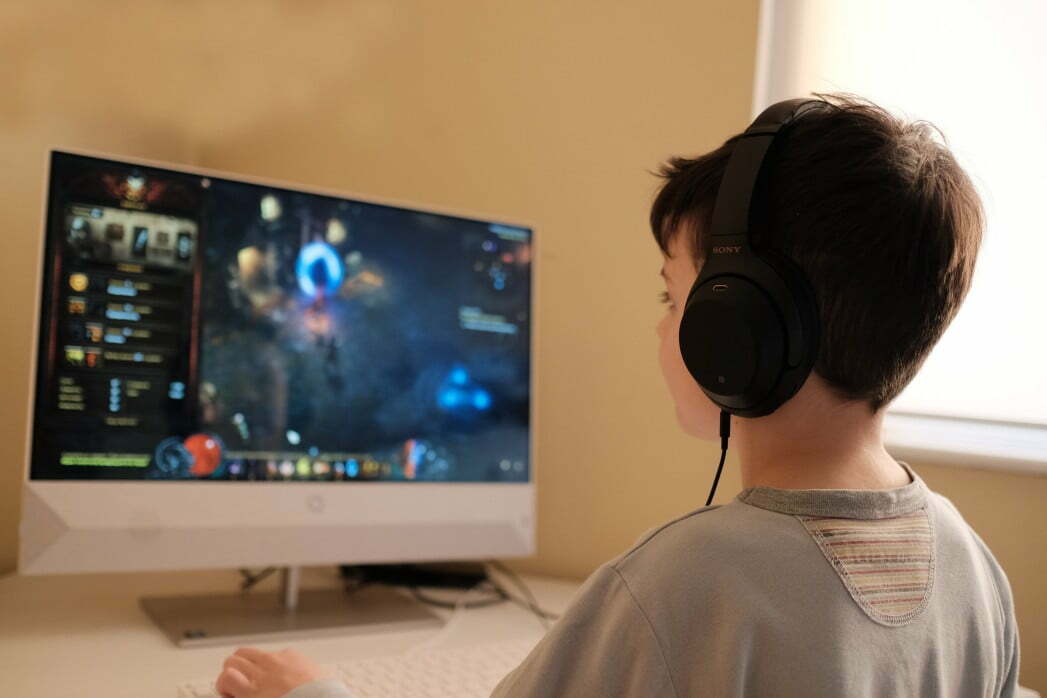
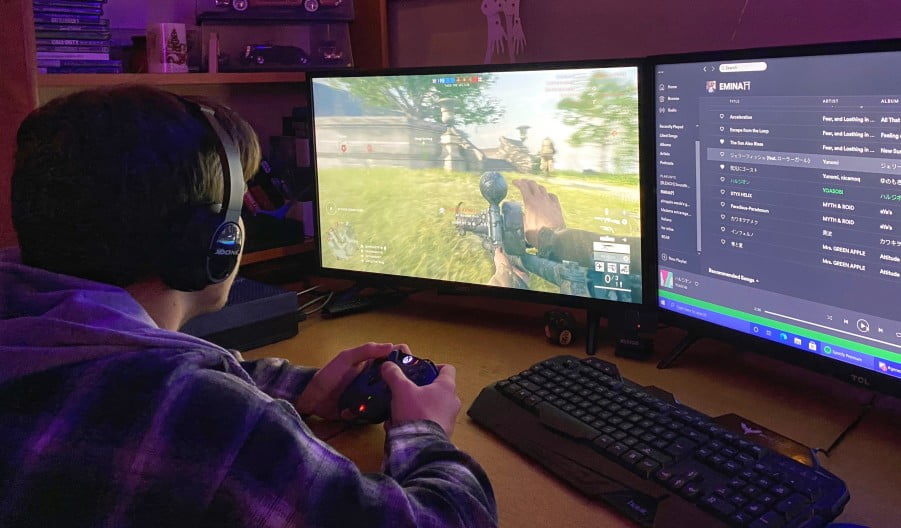
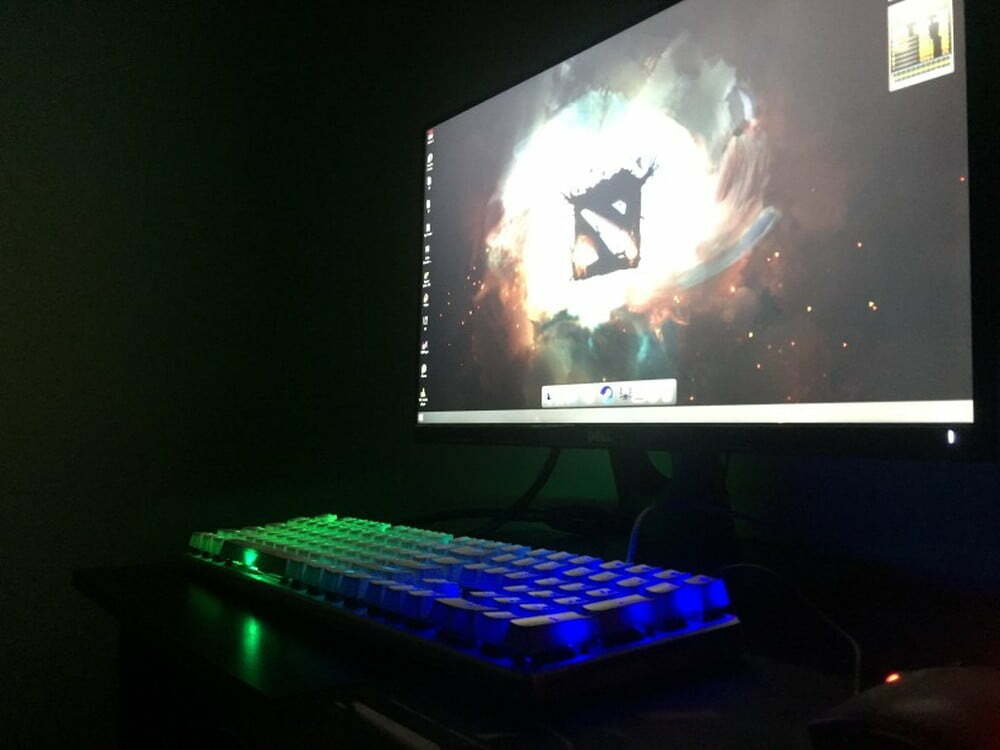



![Best 27 Inch Computer Monitor in [year] 27 Best 27 Inch Computer Monitor in 2026](https://www.gadgetreview.dev/wp-content/uploads/how-to-buy-the-best-computer-monitor.jpg)
![Best BenQ Monitors in [year] 28 Best BenQ Monitors in 2026](https://www.gadgetreview.dev/wp-content/uploads/best-benq-monitor-image.jpg)
![Best ASUS Monitors in [year] 29 Best ASUS Monitors in 2026](https://www.gadgetreview.dev/wp-content/uploads/best-asus-monitor-image.jpg)
![Best Dell Monitors in [year] 30 Best Dell Monitors in 2026](https://www.gadgetreview.dev/wp-content/uploads/best-dell-monitor-image.jpg)
![Best HP Monitors in [year] 31 Best HP Monitors in 2026](https://www.gadgetreview.dev/wp-content/uploads/best-hp-monitor-image.jpg)
![Best Lenovo Monitors in [year] 32 Best Lenovo Monitors in 2026](https://www.gadgetreview.dev/wp-content/uploads/best-lenovo-monitor-image.jpg)
![Best ViewSonic Monitors in [year] 33 Best ViewSonic Monitors in 2026](https://www.gadgetreview.dev/wp-content/uploads/best-viewsonic-monitor-image.jpg)
![Best Gigabyte Monitors in [year] 34 Best Gigabyte Monitors in 2026](https://www.gadgetreview.dev/wp-content/uploads/best-gigabyte-monitor-image.jpg)
![Best Monitors for PS4 Pro Gaming in [year] 35 Best Monitors for PS4 Pro Gaming in 2026](https://www.gadgetreview.dev/wp-content/uploads/best-monitors-for-ps4-pro-image.jpg)
![Best Monitor for Xbox Series X in [year] 36 Best Monitor for Xbox Series X in 2026](https://www.gadgetreview.dev/wp-content/uploads/best-monitor-for-xbox-series-x-image.jpg)
![Best Acer Monitors in [year] 37 Best Acer Monitors in 2026](https://www.gadgetreview.dev/wp-content/uploads/best-acer-monitor-image.jpg)
![Best MSI Monitors in [year] 38 Best MSI Monitors in 2026](https://www.gadgetreview.dev/wp-content/uploads/best-msi-monitor-image.jpg)
![Best SAMSUNG Monitors in [year] 39 Best SAMSUNG Monitors in 2026](https://www.gadgetreview.dev/wp-content/uploads/best-samsung-monitor-image.jpg)
![Best LG Monitors in [year] 40 Best LG Monitors in 2026](https://www.gadgetreview.dev/wp-content/uploads/best-lg-monitor-image.jpg)
![Best AOC Monitors in [year] 41 Best AOC Monitors in 2026](https://www.gadgetreview.dev/wp-content/uploads/best-aoc-monitor-image.jpg)
![Best Philips Monitors in [year] 42 Best Philips Monitors in 2026](https://www.gadgetreview.dev/wp-content/uploads/best-philips-monitors-image.jpg)
![Best Monitors For PUBG in [year] 43 Best Monitors For PUBG in 2026](https://www.gadgetreview.dev/wp-content/uploads/best-monitor-for-pubg-image.jpg)
![Best Stream Decks in [year] 44 Best Stream Decks in 2026](https://www.gadgetreview.dev/wp-content/uploads/best-stream-deck-image.jpg)
![Best Monitors for Streaming in [year] 45 Best Monitors for Streaming in 2026](https://www.gadgetreview.dev/wp-content/uploads/best-monitor-for-streaming-image.jpg)
![Best Monitors For Flight Simulator in [year] 46 Best Monitors For Flight Simulator in 2026](https://www.gadgetreview.dev/wp-content/uploads/best-monitor-for-flight-simulator-image.jpg)













